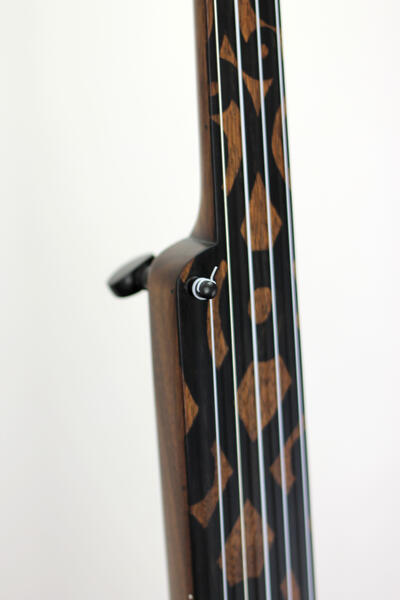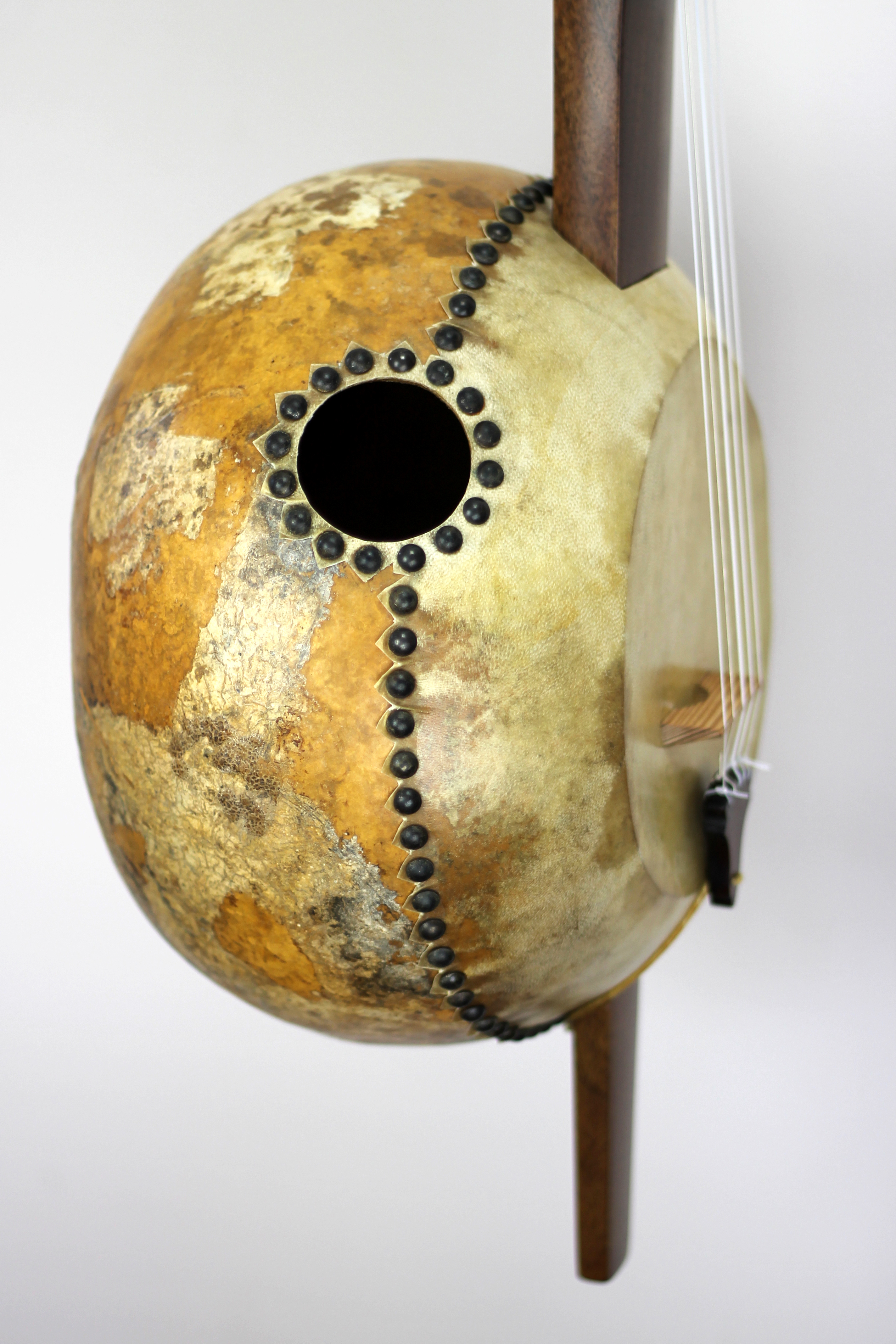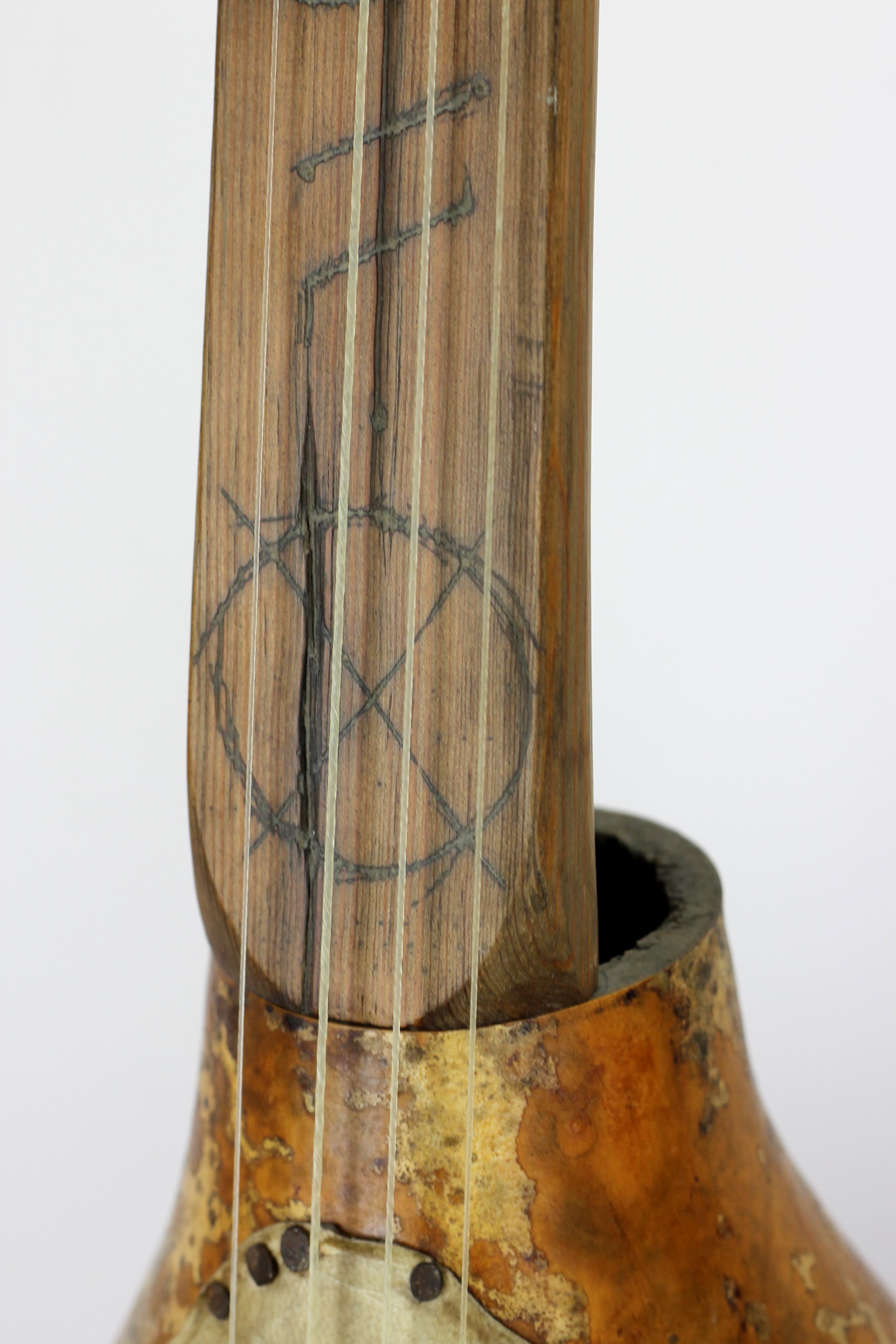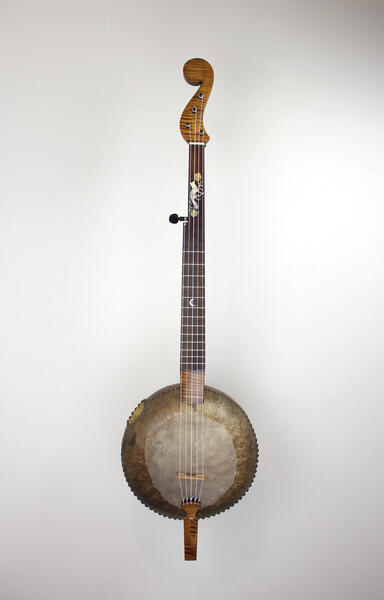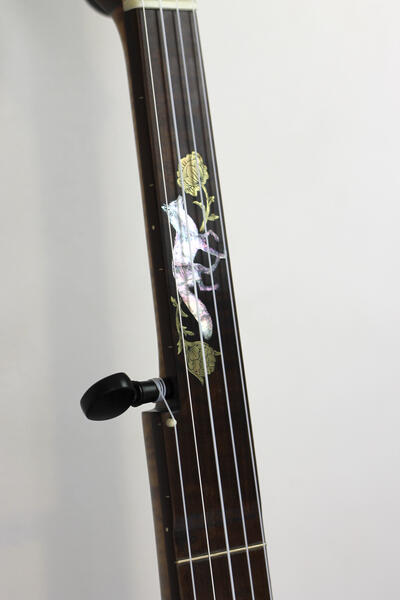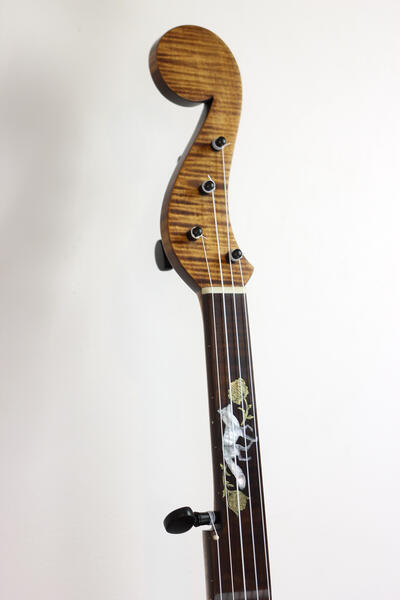Work samples
-
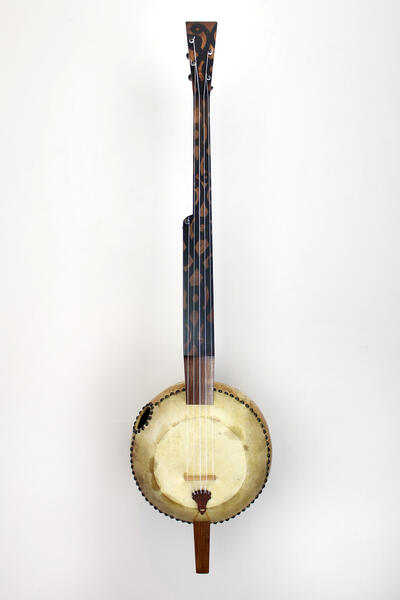 Afro-Caribbean Modern Gourd BanjoWood, metal, goatskin. The neck features marquetry based on artistic motifs found in Surinamese Maroon arts and the gourd skin is etched into design elements found on the Haitian Banza, one of four known surviving early gourd banjos. Although this is a contemporary instrument made to be played, it speaks to the Afro-Caribbean origins of the banjo through the design.
Afro-Caribbean Modern Gourd BanjoWood, metal, goatskin. The neck features marquetry based on artistic motifs found in Surinamese Maroon arts and the gourd skin is etched into design elements found on the Haitian Banza, one of four known surviving early gourd banjos. Although this is a contemporary instrument made to be played, it speaks to the Afro-Caribbean origins of the banjo through the design. -
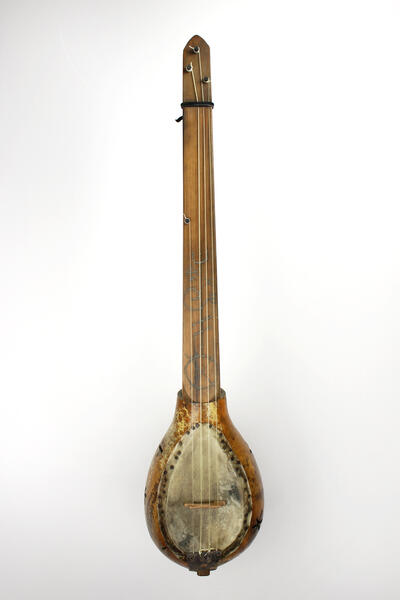 Underground Railroad BanjoWood, metal, goatskin. An imagining of what a gourd banjo may have looked like in the late 1700s South Carolina. There are only four pre-industrial gourd banjos that survive in the world, and they are all held in European collections. The artist was asked to commission this instrument for the Barry Jenkins production of Colson Whitehead's Underground Railroad TV show, exploring what a gourd banjo from South Carolina may have looked like. Pete took decorative elements from ritual drawings found on an African American grave in the South Carolina Sea Island and elements from the four known gourd banjos.
Underground Railroad BanjoWood, metal, goatskin. An imagining of what a gourd banjo may have looked like in the late 1700s South Carolina. There are only four pre-industrial gourd banjos that survive in the world, and they are all held in European collections. The artist was asked to commission this instrument for the Barry Jenkins production of Colson Whitehead's Underground Railroad TV show, exploring what a gourd banjo from South Carolina may have looked like. Pete took decorative elements from ritual drawings found on an African American grave in the South Carolina Sea Island and elements from the four known gourd banjos. -
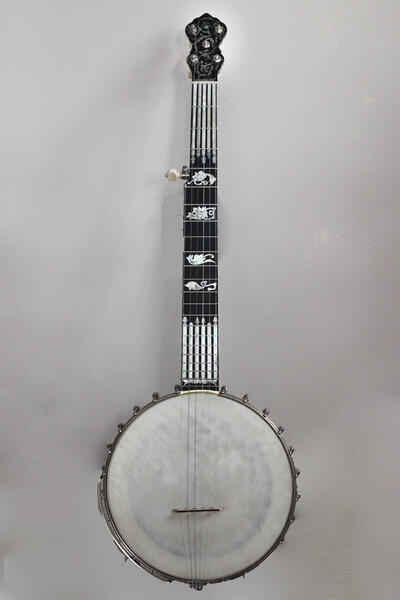 William Morris Inspired 6 StringWood, metal, mother of pearl, goatskin. This banjo reflects the trends and ideas of the late 19th century, high Victorian banjos. The hand-cut mother of pearl inlays are based on the decorative designs of William Morris and add to the gaudy, if beautiful, over-the-top designs of the era.
William Morris Inspired 6 StringWood, metal, mother of pearl, goatskin. This banjo reflects the trends and ideas of the late 19th century, high Victorian banjos. The hand-cut mother of pearl inlays are based on the decorative designs of William Morris and add to the gaudy, if beautiful, over-the-top designs of the era.
About Peter R.
PETE ROSS is a banjo maker, researcher, and musician who lives in Baltimore, Maryland. Mr. Ross is one of earliest contemporary makers of gourd banjos, ranging from those of his own design to exact replicas of historic instruments. His reconstructions of eighteenth- and early nineteenth-century banjos have been featured internationally in museums, art galleries, movies, documentaries, and live performances.
Mr. Ross holds a Bachelor’s of Fine Arts from the School of Visual Arts (SVA)… more
Mr. Ross holds a Bachelor’s of Fine Arts from the School of Visual Arts (SVA)… more
Jump to a project:
Afro-Caribbean Modern Gourd Banjo
Wood, metal, goatskin. The neck features marquetry based on artistic motifs found in Surinamese Maroon arts and the gourd skin is etched into design elements found on the Haitian Banza, one of four known surviving early gourd banjos. Although this is a contemporary instrument made to be played, it speaks to the Afro-Caribbean origins of the banjo through the design.
Underground Railroad Banjo
A custom instrument featured in the Amazon TV production of The Underground Railroad, an adaptation of Colson Whitehead's award-winning book.
In the spring of 2019, Pete was contacted by the prop master for the Amazon TV production of The Underground Railroad, the Barry Jenkins adaptation of a novel by Colson Whitehead. They asked for a gourd banjo for a scene set on an 1850s Georgia plantation. After talking with the prop master and the historical consultant, Pete would build a banjo that combined elements from two early images and a surviving banjo that resembled these images, including the Hans Sloane from Jamaica (c. 1687-1707), a watercolor from South Carolina painted by a man named John Rose (c. 1785) and a gourd banjo collected in Haiti (c. 1851). The instrument would be an opportunity to show, as the prop master put it, "the spirit of Africanism within the slave quarters.” To that end, Pete suggested the use of Gullah spiritual imagery, such as Ezekiel's Wheel, on the fingerboard instead of the carvings on the fingerboard in the Sloane image and on the Hatian Banza. Kristina Gaddy had been researching Gullah beliefs and iconography so Pete had plenty of reference material on hand. They loved this idea, and said they'd been doing their own research into this material and were already planning on incorporating it into the show's sets and other props.-
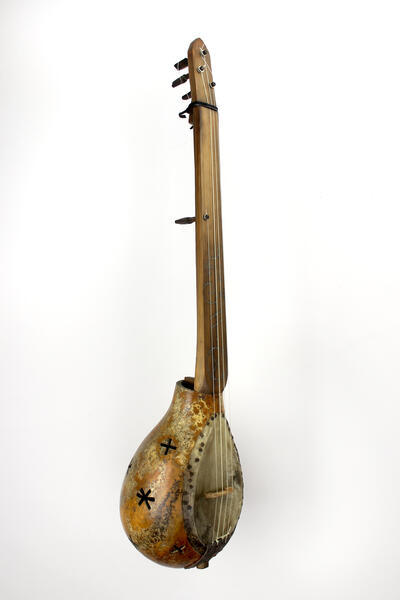 Underground Railroad BanjoThe production team wanted an aged, historically appropriate banjo that was not a copy of any extant early banjo.
Underground Railroad BanjoThe production team wanted an aged, historically appropriate banjo that was not a copy of any extant early banjo. -
 Detail of CosmogramA detail of the cosmogram on the banjo, a symbol of Kongo origin symbolizing the four phases of life.
Detail of CosmogramA detail of the cosmogram on the banjo, a symbol of Kongo origin symbolizing the four phases of life. -
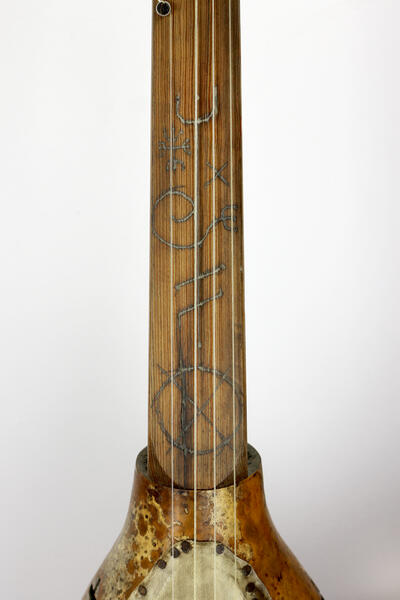 Detail Neck CarvingCarving based on a drawing left on a grave in South Carolina, from Roger Pickney's "BLUE ROOTS: African American Folk Magic of the Gullah People."
Detail Neck CarvingCarving based on a drawing left on a grave in South Carolina, from Roger Pickney's "BLUE ROOTS: African American Folk Magic of the Gullah People." -
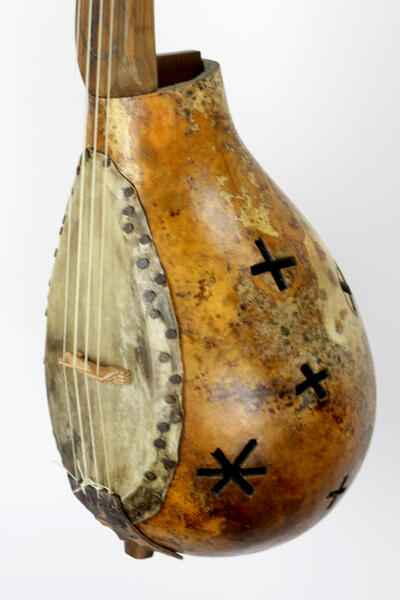 Gourd DetailA detail of the gourd and sound holes, inspired by a watercolor of a banjo in 1790s South Carolina.
Gourd DetailA detail of the gourd and sound holes, inspired by a watercolor of a banjo in 1790s South Carolina.
Fox Banjo
Wood, mother of peal, metal, gourd, goat skin. This custom instrument features a mother of pearl and metal inlay inspired by late 19th century illustrations.
William Morris Inspired 6 String
This custom 6-string banjo includes fingerboard inlays inspired by the designs of William Morris and peghead inlays with the Vega deluxe banjo pattern and designed engravings modeled after Icilio Consalvi's work, a take on the high Victorian banjos of the late 19th century. The figured maple neck includes black veneers and backstrap.
-
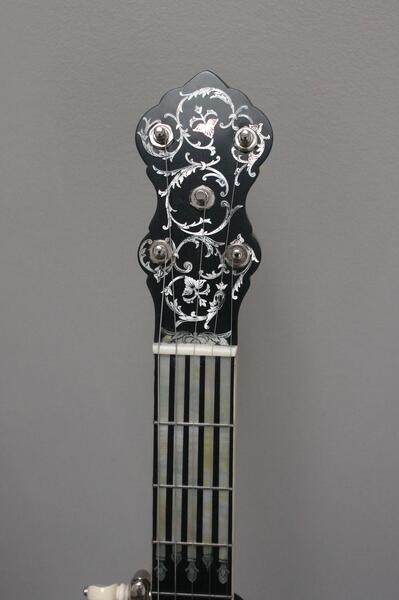 Peghead DetailWood, metal, mother of pearl, bone, goat skin. The mother of pearl vine inlays is inspired by the Vega deluxe banjos of the late 19th century, modified to the artist's own aesthetic.
Peghead DetailWood, metal, mother of pearl, bone, goat skin. The mother of pearl vine inlays is inspired by the Vega deluxe banjos of the late 19th century, modified to the artist's own aesthetic. -
 Peghead Detail 2
Peghead Detail 2 -
 Fingerboard InlaysHand cut mother of pearl inlays based on designs by William Morris.
Fingerboard InlaysHand cut mother of pearl inlays based on designs by William Morris. -
 Side ViewThe figured maple neck includes black veneers and backstrap.
Side ViewThe figured maple neck includes black veneers and backstrap.

